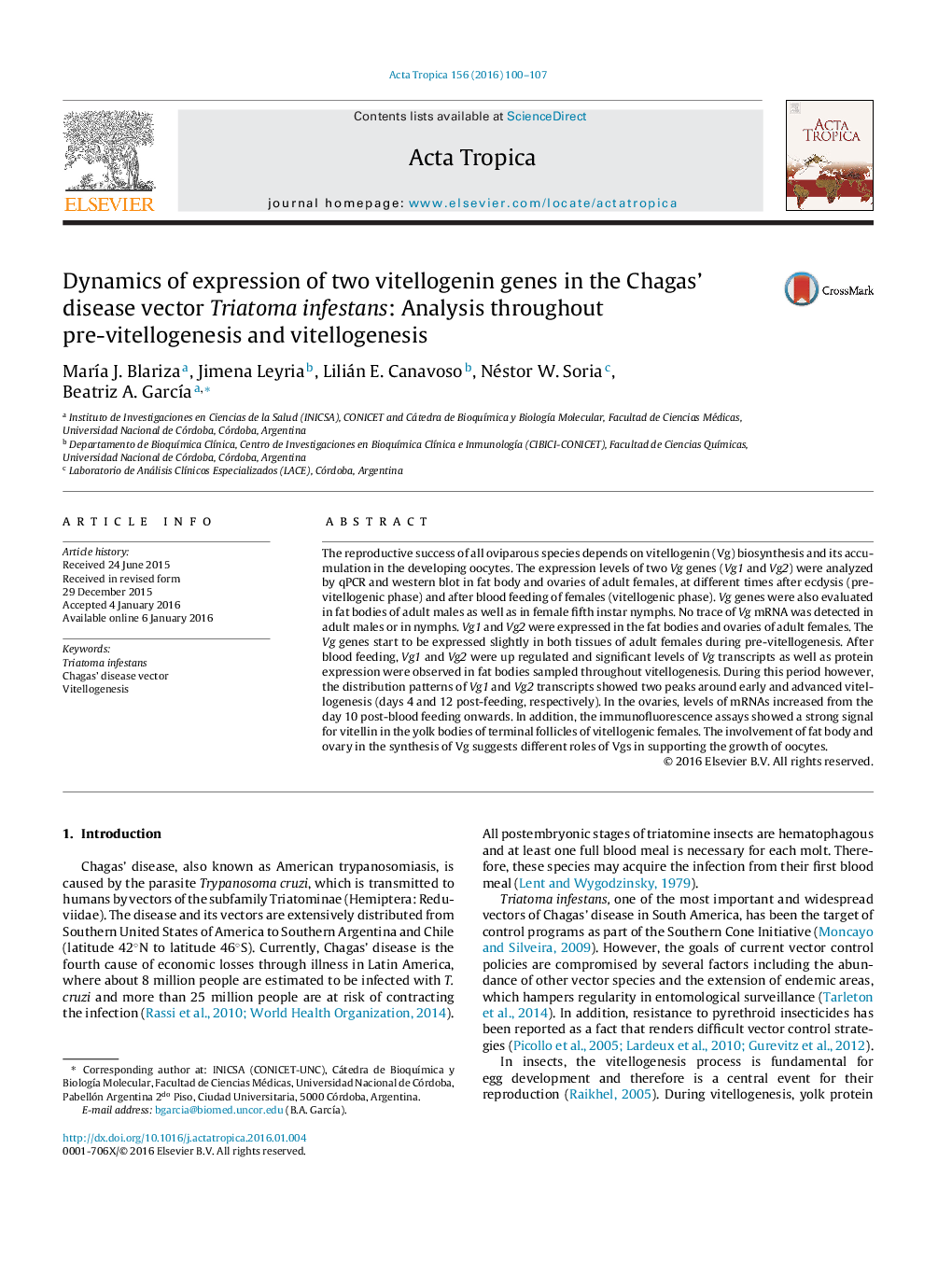| Article ID | Journal | Published Year | Pages | File Type |
|---|---|---|---|---|
| 3393751 | Acta Tropica | 2016 | 8 Pages |
•Expression of two vitellogenin genes (Vg1 and Vg2) in Triatoma infestans.•Gene expression patterns during pre-vitellogenesis and vitellogenesis.•The expression of Vg genes demonstrated to depend on feeding.
The reproductive success of all oviparous species depends on vitellogenin (Vg) biosynthesis and its accumulation in the developing oocytes. The expression levels of two Vg genes (Vg1 and Vg2) were analyzed by qPCR and western blot in fat body and ovaries of adult females, at different times after ecdysis (pre-vitellogenic phase) and after blood feeding of females (vitellogenic phase). Vg genes were also evaluated in fat bodies of adult males as well as in female fifth instar nymphs. No trace of Vg mRNA was detected in adult males or in nymphs. Vg1 and Vg2 were expressed in the fat bodies and ovaries of adult females. The Vg genes start to be expressed slightly in both tissues of adult females during pre-vitellogenesis. After blood feeding, Vg1 and Vg2 were up regulated and significant levels of Vg transcripts as well as protein expression were observed in fat bodies sampled throughout vitellogenesis. During this period however, the distribution patterns of Vg1 and Vg2 transcripts showed two peaks around early and advanced vitellogenesis (days 4 and 12 post-feeding, respectively). In the ovaries, levels of mRNAs increased from the day 10 post-blood feeding onwards. In addition, the immunofluorescence assays showed a strong signal for vitellin in the yolk bodies of terminal follicles of vitellogenic females. The involvement of fat body and ovary in the synthesis of Vg suggests different roles of Vgs in supporting the growth of oocytes.
Graphical abstractFigure optionsDownload full-size imageDownload as PowerPoint slide
